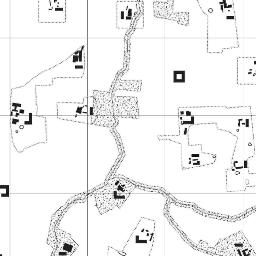STRATEGY FOR A LOST LANDSCAPE
image: Office KGDVS & Bureau Bas Smets, Strategy for a lost landscape, Scale: 1/2500 'Strategy for a lost landscape" challenges us through an architectural thought exercise and reflection about a Belgian village, Watou, located on the border with the French part of Flanders (a geographical region dispersed among parts of Belgium, France, and the Netherlands). The design of the villages in the Belgian part of Flanders is roughly comparable to the idea of Broadacre city, a concept developed by the American architect Frank Lloyd Wright. The project was designed as the antithesis of the city and the apotheosis of suburbia. The typical, ribbon development in Belgian suburbia is the starting point for research done by the architects of Office Kersten Geers David Van Severen and the landscape architects of Bureau Bas Smets. The architects moved past their impression of Watou as a standard Flemish village through their engagement with the site both in person and with topographical maps. According to them Watou is one of the least diluted places and the architects use this as a foil to the other villages in Flanders. They designed their plan based on a reading of the topography, infrastructure, and vegetation of the surrounding landscape. For their research they delineated an area of 5 x5 kilometres. Through a series small interventions (on the map) – for example by removing the houses along the roads radiating from the village, broadening out the rivers, adding extra pollard willows, and reinforcing square farms– they strengthen the landscape and make it visible again. As an alternative to the ribbon development, they utilize the existing situation as starting point where the farms are scattered in consistent division throughout the area (laying on a grid read from the initial topographic maps). At specific points, and in keeping with the consistent division of landscape/architecture, they create annexes for working, living, learning, leisure and culture. The extensions occur through a combination of different architectural typologies including the Castle (The Castle of Fontainebleau of Sebastiano Serlio), the Machine (La Tourette of Le Corbusier) and the Venetian villa (Villa Rotonda of Palladio). These typologies are visually present but nevertheless merge aesthetically with the landscape.The architects display their plans, drawings, collages and a model in the council room of Watou along with a video-recorded discussion in which they explain their ideas about a possible reinterpretation of a village in Flanders. Curator: Angelique Campens The project "Strategy for a lost landscape" is a part of the Interdisciplinary art festival “Verzamelde Verhalen # 1” Watou 2009. More info: Oud Gemeentehuis- Watouplein – Watou (BE) www.watou2009.be |
||||
